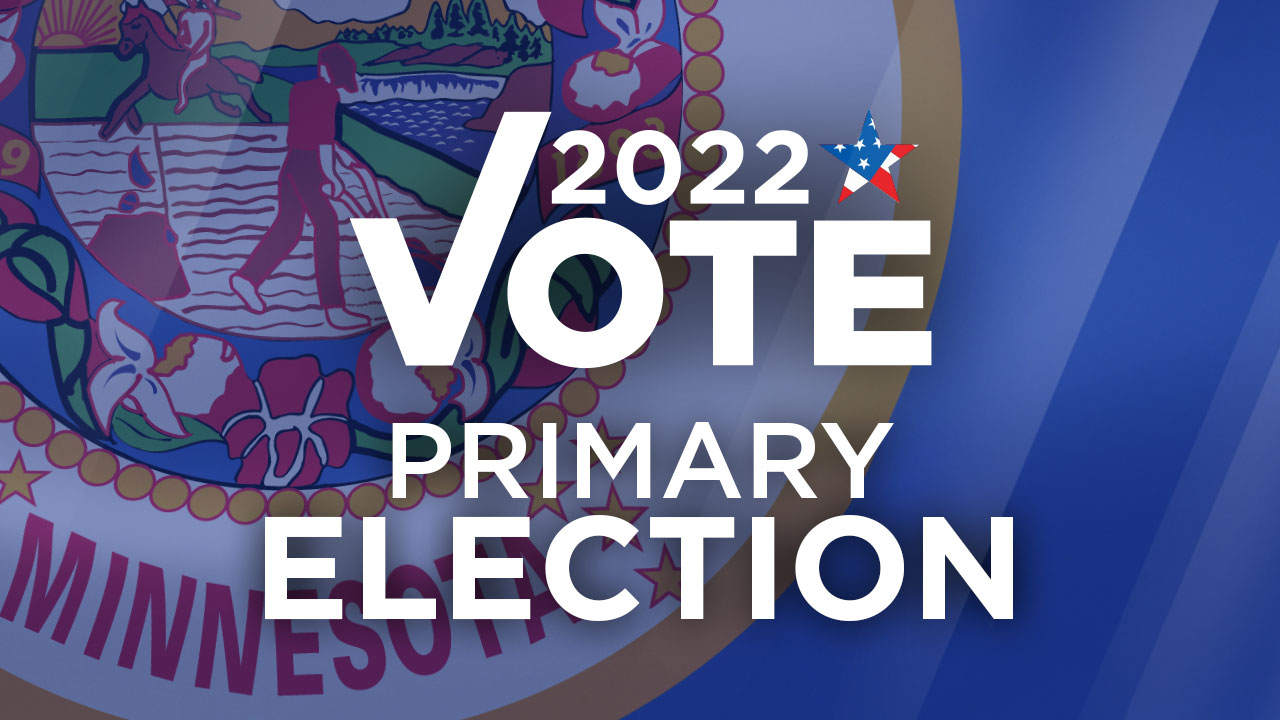What to watch in Tuesday’s primary election in Minnesota
[anvplayer video=”5127685″ station=”998122″]
Minnesota’s primary election day is Tuesday. Below, 5 EYEWITNESS NEWS has a guide for voters, including a look at what races we’re watching.
VOTING GUIDE
Click the dropdown below for a guide to help you prepare as you head to your polling place Tuesday:
[sp_easyaccordion id=”695474″]
RACES TO WATCH IN MINNESOTA
5 EYEWITNESS NEWS is watching contested Republican and Democratic party primary races for governor, secretary of state, attorney general, U.S. House, state Senate and state House.
Here’s a breakdown of key races:
Democratic Gov. Tim Walz is seeking a second term. His likely challenger is Republican Scott Jensen, a physician and former state senator.
LIST: Candidates running for Minnesota governor in 2022

(KSTP-TV)
In their campaigns, both candidates have taken to pointing out topics on which they disagree.
Jensen has questioned Walz’s management of the pandemic and has hammered the governor for rising crime around Minneapolis. Walz, meanwhile, has highlighted his own support of abortion rights and suggested that Jensen would be a threat to chip away at the procedure’s legality in Minnesota.
RELATED: Walz, Jensen tangle on budget surplus, public safety during first debate
In the state’s Fifth Congressional District, crime has emerged as the biggest issue in Democratic Rep. Ilhan Omar’s campaign for the primary.
She faces a challenge from former Minneapolis City Council member Don Samuels, who opposes the movement to defund the police and last year helped defeat efforts to replace the city’s police department. Omar, who supported the referendum, has a substantial money advantage and is expected to benefit from a strong grassroots operation.
In the Fourth Congressional District, longtime Democratic Congresswoman Betty McCollum is also facing a well-financed primary challenge in Amane Badhasso.
McCollum has served in Congress for nearly 22 years and chairs an appropriation subcommittee. Badhasso is a community organizer and refugee from Ethiopia whose family fled the ongoing violence in her home country when she was a child.
In addition, there will be a general election for the First Congressional District to fill the seat of the late Rep. Jim Hagedorn, who died earlier this year from cancer.
Republican former state Rep. Brad Finstad and Democrat Jeff Ettinger, a former Hormel CEO, are simultaneously competing in primaries to determine the November matchup for the next two-year term representing the southern Minnesota district, as well as a special election to finish the last few months of Hagedorn’s term.
Southeast metro area voters will also decide whether to approve a $462.6 million bond to go toward the construction of two elementary schools, expansion of three high schools, and improvements to facilities districtwide, as well as land acquisition. Learn more about the district’s referendum here.
KSTP’s complete elections coverage
Stay with 5 EYEWITNESS NEWS and KSTP.com for complete coverage and election results throughout the day Tuesday.
The Associated Press contributed to this report.